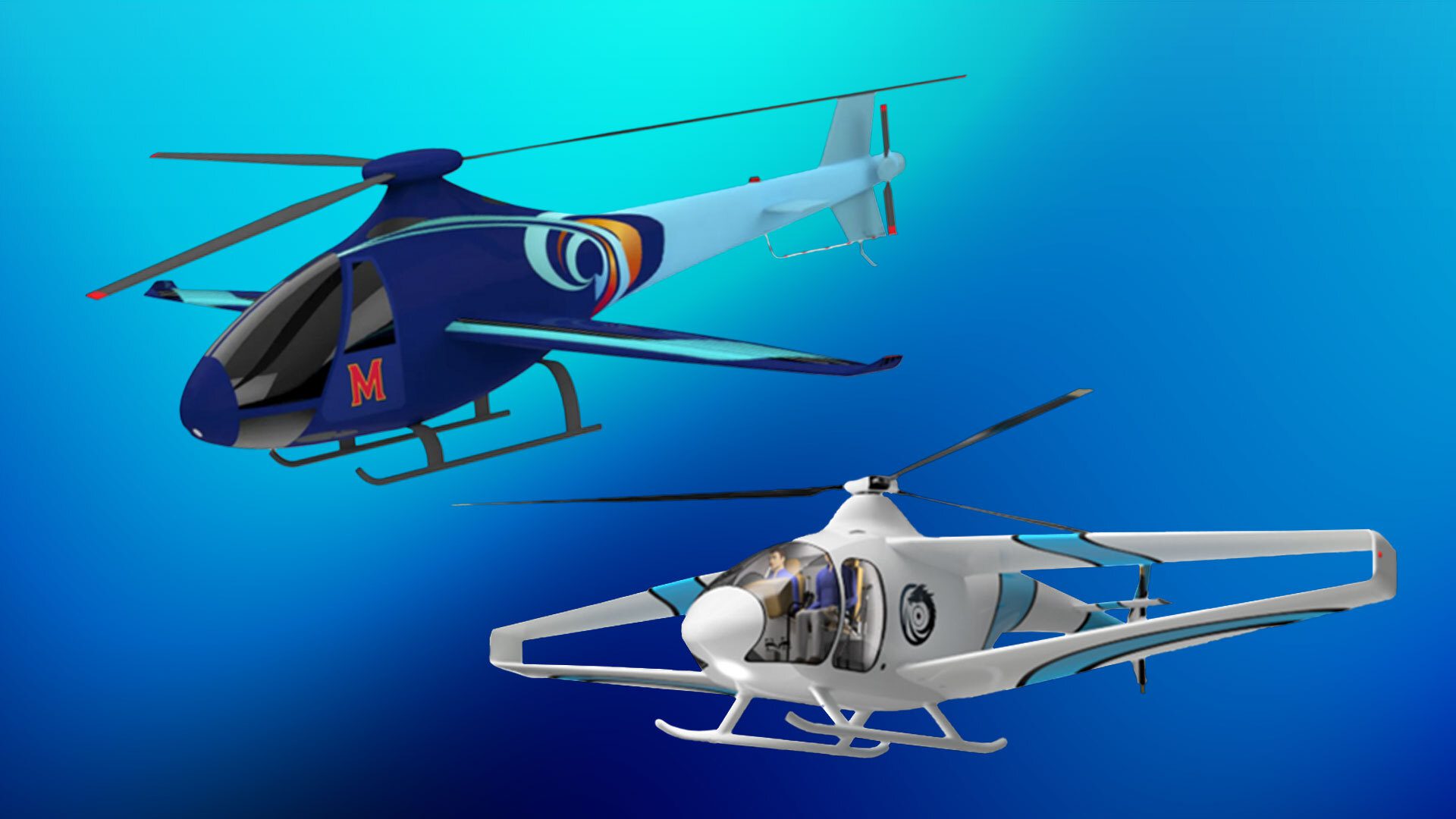- October 08, 2025
- By Jennifer Figgins Rooks
Two Terp engineering teams—one graduate, one undergraduate—took top honors in both divisions of the 2025 Vertical Flight Society (VFS) Student Design Competition, a global challenge that drew 20 entries from 16 universities across 10 countries.
The wins—including the 24th first-place finish in 26 outings by the graduate team—reinforce the University of Maryland’s place as a key center of innovation and education in rotorcraft and advanced air mobility.
Sponsored by Airbus, this year’s competition asked students to envision aircraft powered by proton-exchange membrane fuel cells (PEMFC)–a type of specialty fuel cell for electric propulsion systems–and high-pressure hydrogen storage to power a two-seat rotorcraft to maximize endurance and demonstrate the feasibility of practical zero-emission vertical lift.
The novel power source pushed students to think creatively about the future of clean and quiet air travel, the teams said.
In the graduate category, Maryland’s Wyvern soared to first place. Named for a mythical, winged dragon, the 1,648 kg aircraft should fly for five hours, requiring only 26 kg of hydrogen. It featured an unconventional box wing and an advanced variable-speed rotor to maximize the benefits of the electric drive. The team also designed the fuel cell and leveraged in-house research on power sharing with booster batteries to manage the unique power demands of VTOL.
The graduate team was led by Kumardip Basak and included Apurva Anand, Brett B. Sweeny, Dogyu Jun, Hussien A.A.H. Hussien, Jacob C. McCallum, Radu Teodorescu, Remi J. Hensel and William M. Ogle.
In the undergraduate division, Maryland’s Draco—named for a dragon without fire, symbolizing clean energy—is a 1,417-kg aircraft that can fly 3.5 hours on 14.2 kg of hydrogen. The fuel cell also leveraged in-house research on power-sharing to optimize the size of the PEMFC system. The main rotor is three-bladed with variable speed, and the wing is much simpler, based on proven, production-ready technology. Draco uses a single-stage bevel transmission with two electric motors for simplicity and reliability.
The team was led by Samuel Renz and included Joshua Katz, Colby Cotoia, Ron Berlin, Billy Lee, Ishmael Agui and Isaiah Lee.
The Vertical Flight Society awarded more than $12,000 in prizes at the event, and both teams will present their work at the organization’s 82nd annual Forum & Technology Display in May in Palm Beach, Fla.
The teams were taught and mentored by Research Scientist V.T. Nagaraj and Distinguished Visiting Professor Tomasz Krysinski, as well as other faculty members of the Alfred Gessow Research Center.
“The VFS designs inspire students to work on problems that are envisioned by the rotorcraft industry to shape the future of vertical flight,” said Alfred Gessow Professor in Aerospace Engineering Anubhav Datta.
The competition forces the students to implement classroom theory into real-world engineering practice, said Distinguished University Professor Inder Chopra, director of UMD’s Alfred Gessow Rotorcraft Center. “But most importantly, they learn to appreciate their individual strengths, along with the value of teamwork, effective leadership, and project management,” he said.
